|
NSF Launches Four Engineering Centers
From National Science Foundation, August 17, 2011: " The National Science Foundation (NSF) today announced the award of $74 million to create four new Engineering Research Centers (ERCs) that will advance interdisciplinary research and education in partnership with industry.
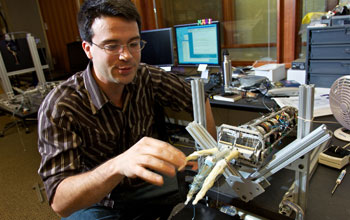 During the next five years, the ERCs will share the goal of creating knowledge and innovations that address significant societal issues such as health and sustainability challenges while advancing the competitiveness of U.S. industry. The centers will support research and innovation in solar energy, water infrastructure, neural engineering and energy transmission." During the next five years, the ERCs will share the goal of creating knowledge and innovations that address significant societal issues such as health and sustainability challenges while advancing the competitiveness of U.S. industry. The centers will support research and innovation in solar energy, water infrastructure, neural engineering and energy transmission."
Source:
Click on the link to read the full article
National Science Foundation (NSF): http://www.nsf.gov/news/news_summ.jsp?cntn_id=121042&org=EEC&from=news
Image: Yoki Matsuoka, University of Washington
|
| |
|
Hydrogen Storage in Nanotubes and Nanostructures
From Materials Today, July 25, 2011, by George E. Froudakis: Carbon nanotubes have been investigated as a possible hydrogen storage device since 1997 with controversial results. This review summarizes the work on various types of nanotubes and nanostructures as hydrogen storage devices. The basic mechanics of hydrogen storage in nanomaterials are shown through theoretical modeling. You will understand why high hydrogen storage at ambient conditions cannot occur in bare carbon nanotubes. Guidelines are proposed to enhance hydrogen storage capacity of existing and new material development strategies.
Source:
Click on the link to access the full article
Materials Today: http://www.materialstoday.com/view/19647/hydrogen-storage-in-nanotubes-nanostructures/ |
|
|
|
CIS Cluster Tool Project for Thin Film PV
From Solar Daily, Germany, August 17, 2011: "The 'CIS Cluster Tool' project is starting its work on the development of new manufacturing procedures for copper indium selenide-based thin film semiconductors (CIS) as part of a sponsoring project within the "Photovoltaics Innovations Alliance". The research project is being carried out in cooperation of leading German companies in the photovoltaic industry. The project is invested for three years and is financed by funds from the "Photovoltaic Innovations Alliance" funding initiative amounting to 2.9 m euros and by contributions of the participating companies.
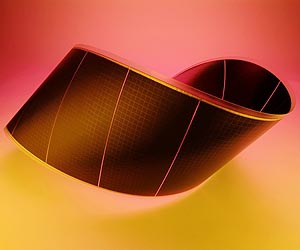 The overall project objective of the working group is to research a new manufacturing process for CIS semiconductor films in order to achieve the highest level of efficiency of thin film solar modules combined with a significant increase of plant throughput compared with existing concepts. The overall project objective of the working group is to research a new manufacturing process for CIS semiconductor films in order to achieve the highest level of efficiency of thin film solar modules combined with a significant increase of plant throughput compared with existing concepts.
An industrial manufacturing process is to be developed on the basis of findings from a planned demonstration plant, with which the costs of manufacturing thin film photovoltaic modules per watt peak can be significantly reduced.
The CIS Cluster Tool joint project is a cooperation between four experienced partners from different levels of the value chain in the photovoltaics industry: AVANCIS GmbH and Co. KG, (manufacturer of CIS photovoltaic modules), SINGULUS TECHNOLOGIES AG (plant construction), HERAEUS Noblelight GmbH (infrared heating technology) and the IfG Institute for Scientific Instruments GmbH (innovative measurement techniques)."
Source:
Click on the link to read the full article
Solar Daily, Germany: http://www.solardaily.com/reports/CIS_cluster_tool_project_for_thin_film_PV_999.html
Image: Solar Daily, Germany File Image
|
| |
|
"Watermark Ink" Device Identifies Unknown Liquids Instantly
From Harvard University, August 3, 2011: "Materials scientists and applied physicists collaborating at Harvard's School of Engineering and Applied Sciences (SEAS) have invented a new device that can instantly identify an unknown liquid. The device, which fits in the palm of a hand and requires no power source, exploits the chemical and optical properties of precisely nanostructured materials to distinguish liquids by their surface tension.
The "Watermark Ink," or "W-Ink," concept relies on a precisely fabricated material called an inverse opal. The inverse opal is a layered glass structure with an internal network of ordered, interconnected air pores. Lead author Ian B. Burgess, a doctoral candidate in Marko Lončar's lab, and his colleagues discovered that selectively treating parts of the inverse opal with vaporized chemicals and oxygen plasma creates variations in the reactive properties of the pores and channels, letting certain liquids pass through while excluding others.
The finding, published in the Journal of the American Chemical Society (JACS), offers a cheap, fast, and portable way to perform quality control tests and diagnose liquid contaminants in the field."
Source:
Click on the link to read the full article.
Harvard University: http://www.seas.harvard.edu/news-events/press-releases/watermark-ink
Image: Ian Burgess, Harvard University
|
| |
|
Department of Energy Awards More Than $145 Million for Advanced Solar Technologies
From Department of Energy, September 1, 2011:  " Energy Secretary Steven Chu announced more than $145 million for projects to help shape the next generation of solar energy technologies and ensure that the United States remains a leader in this global market. Sixty-nine projects in 24 states will accelerate research and development to increase efficiency, lower costs and advance cutting-edgetechnologies. Funded through DOE's Office of Energy Efficiency and Renewable Energy, the projects will also improve materials, manufacturing processes and supply chains for a wide range of photovoltaic (PV) solar cells and components of solar energy systems. Some of these investments also support efforts that will shorten the overall timeline from prototype to production and streamline building codes, zoning laws, permitting rules, and business processes for installing solar energy systems.
'America is in a world race to produce cost-competitive renewable energy that can reduce our reliance on fossil fuels, create manufacturing jobs across the nation, and improve our energy security,' said Secretary Chu. 'The projects announced today under DOE's SunShot Initiative will spur American innovation to help reduce the costs of clean, renewable solar energy and re-establish U.S. global leadership in this fast growing industry.'" View the full list of awards by project category.
Source:
Click the link to read the full article:
U.S. Department of Energy: http://energy.gov/articles/department-energy-awards-more-145-million-advanced-solar-technologies
Image: U.S. Department of Energy
|
| |
|
Independence Day for Thin Film: Can it Support itself without Subsidies?
From PV Insider, September 19, 2011, by Bea Gonzalez: "With the high-profile collapse of Solyndra placing the wider thin film community under scrutiny, PV Insider has been examining how the industry intends to fight back by reducing its costs and develop new innovations. Although the case of Solyndra is being held up against the thin film industry, the DOE have continued to demonstrate their confidence in the technology. In August this year a $197 million loan guarantee was granted to SoloPower for a manufacturing facility that U.S. Energy Secretary Steven Chu announced would create around 450 permanent jobs and 270 construction jobs. In the same month $967 million was guaranteed to the Agua Caliente Solar project, a 290-megawatt photovoltaic solar generating facility in Yuma County, Arizona that will use thin film solar panels manufactured by First Solar. But in order to build a self-sufficient industry that does not rely on government support, cost reduction is now of paramount importance." Source:
Click the link to read the full article
PV Insider: http://news.pv-insider.com/thin-film-pv/independence-day-thin-film-can-it-support-itself-without-subsidies
|
| |
|
Improved Mo-Re VPS Alloys for High Temperature Uses
From NASA Tech Briefs, September 1, 2011, Marshall Space Flight Center, Alabama: "Dispersion-strengthened molybdenum-rhenium alloys for vacuum plasma spraying (VPS) fabrication of high-temperature-resistant components are undergoing development. In comparison with otherwise equivalent non-dispersion-strengthened Mo-Re alloys, these alloys have improved high-temperature properties. Examples of VPS-fabricated high-temperature-resistant components for which these alloys are expected to be suitable include parts of aircraft and spacecraft engines, furnaces, and nuclear power plants; wear coatings; sputtering targets; x-ray targets; heat pipes in which liquid metals are used as working fluids; and heat exchangers in general. These alloys could also be useful as coating materials in some biomedical applications."
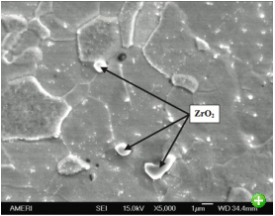
Source: Click the link to read the full article:
NASA Tech Briefs, Marshall Space Flight Center: http://www.techbriefs.com/component/content/article/10849
Image: NASA Tech Briefs
|
| |
|
Superconductivity-Related Materials Retain Shape but Change Properties Under Strain
From University of Arkansas Newswire, September 1, 2011: "A University of Arkansas physicist and his colleagues have found that ultra-thin films of superconductors and related materials don't lose their fundamental properties when built under strain when built as atomically thin layers, an important step towards achieving artificially designed room temperature superconductivity. This ability will allow researchers to create new types of materials and properties and enable exotic electronic phases in ultra-thin films.
Jak Chakhalian, University of Arkansas professor of physics, 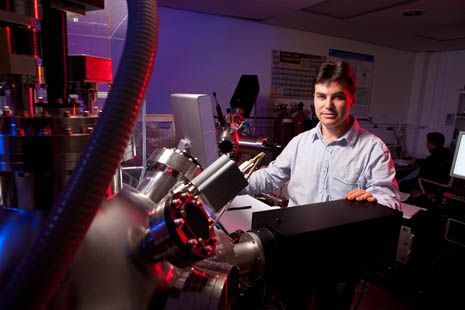 and his colleagues reported their findings in Physical Review Letters. and his colleagues reported their findings in Physical Review Letters.
Room temperature superconductivity would change the world's economy, Chakhalian contends. To start, superconductors can carry electricity without losing energy to heat during transmission the way all of today's materials do. Today's power grid loses almost 15 percent of its energy to heat. That may not seem like a high number, but it translates into a multi-billion dollar loss.
Scientists have looked at many solutions to increase energy efficiency, but Chakhalian seeks radical energy solutions, like a material that acts as a room-temperature superconductor."
Source: Click on the link to read the entire article:
University of Arkansas Newswire: http://newswire.uark.edu/article.aspx?id=16692
Image: University of Arkansas
|
| | |
|
Ion Armageddon: Measuring the Impact Energy of Highly Charged Ions
From PhysOrg.com, August 31, 2011, by Mark Esser: "Much like a meteor impacting a planet, highly charged ions hit really hard and can do a lot of damage, albeit on a much smaller scale. And much like geologists determine the size and speed of the meteor by looking at the hole it left, physicists can learn a lot about a highly charged ion's energy by looking at the divots it makes in thin films.
Building upon their work for which they were recently awarded 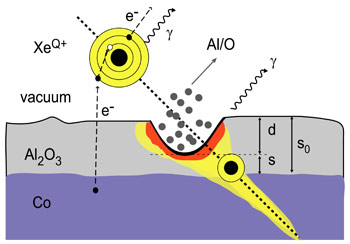 a patent,* scientists at the National Institute of Standards and Technology (NIST) and Clemson University have measured the energy of highly charged ion impacts on a thin film surface for the first time in detail.** Understanding how ions discharge their energy upon impact will help researchers to make better predictive models of how the particles affect surfaces. a patent,* scientists at the National Institute of Standards and Technology (NIST) and Clemson University have measured the energy of highly charged ion impacts on a thin film surface for the first time in detail.** Understanding how ions discharge their energy upon impact will help researchers to make better predictive models of how the particles affect surfaces.
The research team used xenon atoms from which they had stripped all but 10 of the atoms' original 54 electrons. Making an atom so highly ionized takes a lot of energy-about 50,000 electron volts. The atom soaks up all the energy that went into freeing the electrons until it is capable of imparting more energy, and thus more damage, than could be done with kinetic energy-mass and speed-alone.
'When the highly charged ion is finally released and hurtles into its target, most of its energy, about 60 percent, blows back in the 'splash' and dissipates into the vacuum,' says Josh Pomeroy. 'According to our measurements, 27 percent of the remaining 40 percent of the ion's energy goes into changing the shape of the material-making divots.' Pomeroy says that the remaining 13 percent is most likely converted to heat."
Source: Click the link to read the full article.
PhysOrg.com: http://www.physorg.com/news/2011-08-ion-armageddon-impact-energy-highly.html
Image: NIST
|
|
|
|
New Zinc-Oxide Manufacturing Method Boosts PV Efficiency
From ElectroIQ.com, September 13, 2011: "Swiss Federal Institute of Technology in Lausanne (EPFL) researchers are developing solar cells with higher efficiency thanks to a new nanopatterning technology for the zinc oxide (ZnO) layer. The solar cells are 1000x thinner than conventional cells.
The thin-film solar cells under development by Professor Christophe Ballif's team at the Photovoltaics and Thin-Film Electronics Laboratory at the EPFL use thin silicon layers with zinc oxide to scatter light onto the silicon.
Zinc oxide layers grow in small pyramid-shaped crystals, which the researchers are modifying for better light scattering. They grew ZnO on an inverted mold built in the structure they wanted. The thin layer is then deposited by inverting the mold."
Source: Click the link to read the full article.
ElectroIQ.com:
Read more
Image: ElectroIQ.com
|
|
|
|
How Graphene's Electrical Properties Can Be Tuned
From University California Riverside Newsroom, September 26, 2011: "An accidental discovery in a physicist's laboratory at the University of California, Riverside provides a unique route for tuning the electrical properties of graphene, nature's thinnest elastic material. This route holds great promise for replacing silicon with graphene in the microchip industry.
The researchers found that stacking up three layers of graphene, like pancakes, significantly modifies the material's electrical properties. When they fabricated trilayer graphene in the lab and measured its conductance, they found, to their surprise, that depending on how the layers were stacked some of the trilayer graphene devices were conducting while others were insulating.
"What we stumbl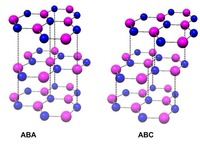 ed upon is a simple and convenient 'knob' for tuning graphene sheets' electrical properties," said Jeanie Lau, an associate professor of physics and astronomy, whose lab made the serendipitous finding. ed upon is a simple and convenient 'knob' for tuning graphene sheets' electrical properties," said Jeanie Lau, an associate professor of physics and astronomy, whose lab made the serendipitous finding.
Study results appeared online Sept. 25 in Nature Physics."
Source: Click the link to read the full article.
UCR Newsroom: http://newsroom.ucr.edu/2733
Image: Lau lab, UC Riverside
|
|
|
|
LiU Researcher Invents Fast Switch and Printable Transistor
From Linköping University, September 9, 2011, by Monica Westman Svenselius: " Lars Herlogsson's thesis illustrates how to develop a fully functional, fast switching and printable transistor in cheap plastic. As if that was not enough, all six articles in the thesis were published in the prestigious Advanced Materials journal.
'A thesis that is unparalleled at LiU, it'll probably be a while before we get to experience anything like it again', says proud mentor, Magnus Berggren, professor of organic electronics at the Department of Science and Technology, Campus Norrköping.
Lars Herlogsson's thesis claims that with the help of polymers, plastics, which are already manufactured on a large scale, it is possible to manufacture transistors that are fast and can run on small printed batteries, where the drive voltage is around 1 volt.
They are particularly suitable for printed electronics.
The transistor is made up of two polymers, one of which acts as a semiconductor and the other as an electrolyte; a substance containing mobile charged ions that controls the current flowing through the transistor.
Polymers consist of linked chains of molecules. Thanks to the fact that one type of charged particle in the electrolyte, be it positive or negative ions, binds to the polymer chain in the semiconducting polymer. The active layer, in which the electric field is concentrated in the electrolyte, becomes very thin (1 nanometre) irrespective of the thickness of the electrolyte layer.
Whether it is a negative or positive ion that binds depends on whether it is a transistor that is hole-conducting (p-channel) or if it is electron-conducting (n-channel). "
Source:
Click to read the full article
Linköping University: http://www.liu.se/forskning/forskningsnyheter/1.287854?l=en
|
| |
Do You Have an Interesting Article to Share?

Interested in sharing the latest news in vacuum coating technology? Forward us a link to an article you want to share with the rest of the SVC readership to publications@svc.org. Purchase advertising space in this newsletterby contacting SVC at svcinfo@svc.org.
Society of Vacuum Coaters
71 Pinon Hill Place NE
Albuquerque, New Mexico 87122
505-856-7188
|
| |
|
BellowsTech, LLC edge-welded metal bellows allow for flexibility in axial, angular and parallel offset motion and provide the most stroke in the smallest amount of space, by reaching 90% of its free length. Learn More.
BellowsTech, LLC
Phone: 386-615-7530
www.bellowstech.com
Email: bellows@bellowstech.com
|
| |
The Hiden HPR-30 is a residual gas analyser configured for analysis of gases and vapours in vacuum processes and for vacuum diagnostics.
Learn more.
E-mail address: info@hiden.co.uk
Phone: +44 [0] 1925 445225 (UK)
or [1] 734 542 6666 (USA)
Website: www.HidenAnalytical.com
|
| |
VAT manufactures high quality vacuum valves for a variety of applications. Products include: gate, angle, fast-closing, transfer, pendulum, throttle, pressure control, all-metal and customized valves. Learn more.
Contact Us:
Phone: 781-935-1446
or 800-935-1446
E-Mail: US@vatvalve.com
|
| |
 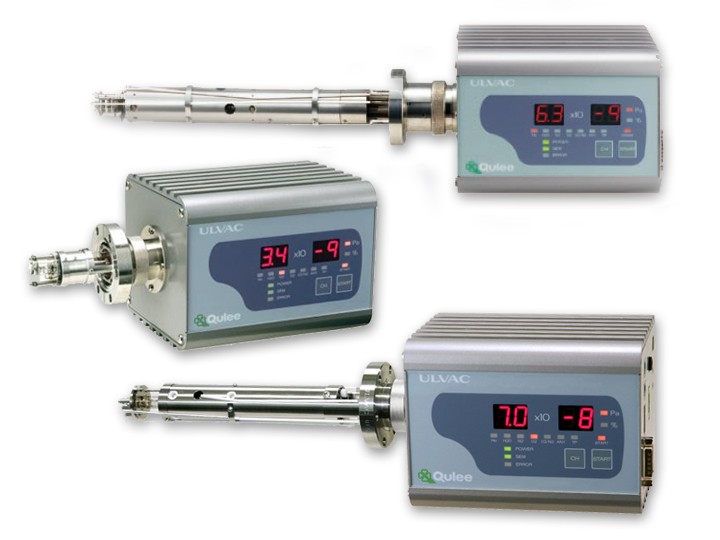
Gas Analysis - Low Cost RGA
ULVAC offers three compact quadrupole mass spectrometers - the low cost Qulee BGM, Qulee CGM for high pressures and Qulee HGM for the highest sensitivity. Learn More.
ULVAC Technologies, Inc.
Visit Us Online
Tel: 1-978-686-7550
E-mail: sales@us.ulvac.com
|
| |
INFICON thin film deposition controllers, monitors and accessories, including customizable sensors and feedthroughs, offer features, function and value targeted to your application. View our catalog and contact us today!
INFICON
www.inficon.com
E-mail: reachus@inficon.com
|
|
|
 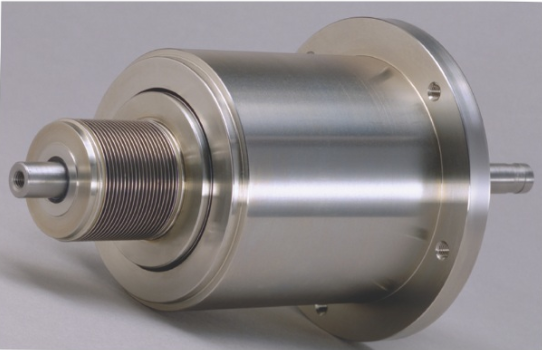
Custom Feedthrough Assemblies
Rigaku offers custom-engineered solutions from simple feedthroughs to feedback controlled subsystems for managing motion. This includes function-enhanced products and clean/vacuum magnetic rotary seals for robots. Learn More.
Rigaku Vacuum Products
www.rigakuvacuum.com
E-mail: vacuum-info@rigaku.com
Phone: 603-890-6001
|
| |
No One Can Shut You Down Faster Than Comdel
Comdel's new Arc Detect Fast Shutdown works within the matching network and power supply, providing automatic shutdown of the RF to minimize arc damage. Learn more.
Comdel
11 Kondelin Road
Gloucester, MA 01930
Tel: 978-282-0620 or 800-468-3144
Fax: 978-282-4980
www.comdel.com
info@comdel.com
|
| |
|
 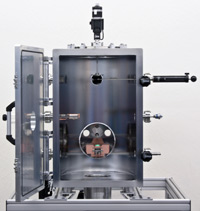
MDC's Bundled Engineered Solutions
MDC offers virtually every component required for vacuum coating applications. With MDC's standard chamber line you have the advantage of bundling these high quality pieces together without hours or weeks of special engineering. More...
MDC
engineered process solutions
www.mdcvacuum.com
|
| |
|
 
Choose Evatec's MSP sputter tool for high volume production in 3D technology and enjoy excellent thin film repeatabilities, a proven tool concept and a reliable partner.
Phone: (603) 669-9656
www.evatecnet.com
E-Mail:infoNA@evatecnet.com
|
| |
 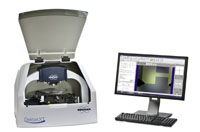
Bruker's New DektakXT™ Stylus Profiler DektakXT™ sets a new standard in high-performance thin-film measurements with better than 5Å step height repeatability, scanning up to 40% faster, and a single-arch design, that improves the system's noise floor. Learn More. Bruker Corporation 520-741-1044 productinfo@bruker-nano.com |
| |
|

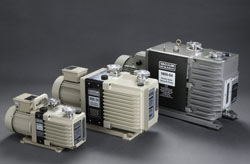
Rotary Vane Pumps
Stock to 4 Weeks
3 to 64 CFM, 6 to108 m3/hour. All voltages, 1 and 3 phase. Fomblin/Krytox available. 2 year parts and labor warranty, satisfaction guaranteed.
Vacuum Research Corporation Phone: 800/426-9340
Web: www.vacuumresearch.com
E-Mail: vrc@vacuumresearch.com
|
| |

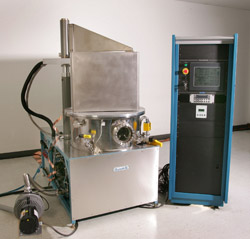
Dynavac's Diamond-Like Carbon Deposition System produces infrared and anti-reflection coatings for commercial and military applications on substrates up to 24" diameter.
www.dynavac.com
Telephone: 781-740-8600
E-Mail: sales@dynavac.com |
| |
|
 
Speed pump-down and vacuum performance with RediVac™ Vented Screws and Vacuum Baked O-Rings from UC Components Inc.
www.uccomponents.com
|
| |
|
 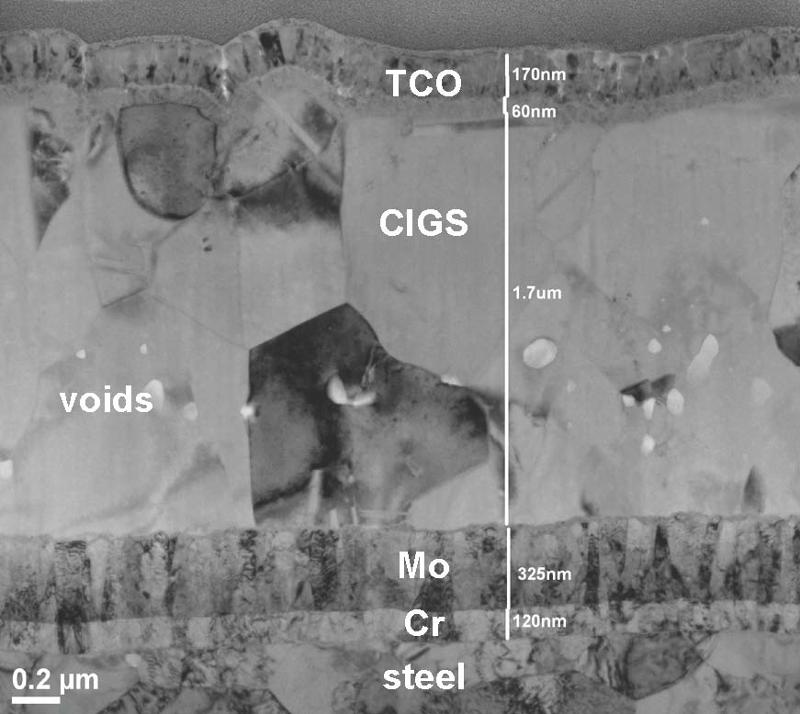
Evans Analytical Group (EAG) is the leading global provider of high quality surface analysis and materials characterization services to the films and coatings industry.
Evans Analytical Group
1.800.366.3867
|
| |
|
 
Veeco provides RF Linear Ion Sources for medium and large scale substrates featuring a broad power range and patented technology that provides reliability and performance.
To Learn More Visit:
www.veeco.com
970-221-1807
|
| |
|
 
Solid Sealing Technology designs and manufactures hermetic assemblies using metalizing, brazing and glass-ceramic sealing including standard and custom Feedthroughs/Connectors for extreme environments and UHV.
Contact:
Ph: 518-874-3600
Fax: 518-874-3610
info@solidsealing.com
|
| |
 
Nanovea manufactures Profilometers, Mechanical Testers & Tribometers to combine the most advanced testing capabilities in the industry. And unlike other manufacturers, Nanovea also provides Laboratory Services.
Learn More
www.nanovea.com
E-Mail: info@nanovea.com
Phone: 949-461-9292 |
| |
 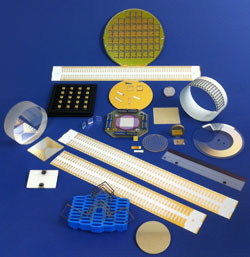
Thin-Films Research is prepared to meet your custom thin-film coating requirements. Using state-of-the-art equipment and over 40 years of experience, Thin-Films Research offers technology for the electro-optics, semiconductors, sensors & medical electronic industries. Learn More
Thin-Films Research, Inc.
270 Littleton Road
Westford, MA 01886
Phone: 978-692-9530
Fax: 978-692-9531
E-Mail: sales@thinfilmsresearch.com |
| |
|
 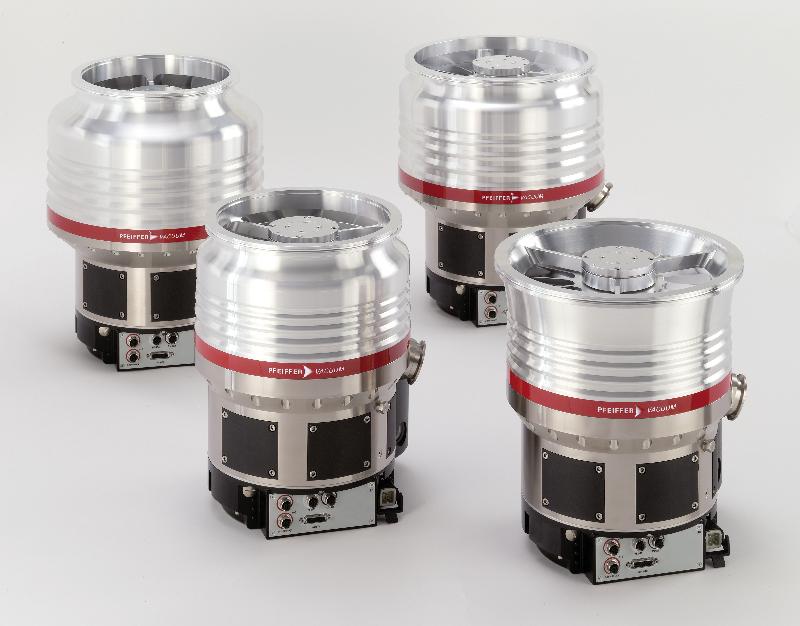
Turbopumps for High Performance and Reliability
HiPace(TM) turbopumps, available in pumping speeds from 10 to 3000 l/s, provide high gas throughput, exceptional compression for light gases and reliable operation, even in the harshest coating applications.
Learn More.
Pfeiffer Vacuum, Inc.
24 Trafalgar Square
Nashua, NH 03063-1988
Phone: 603-578-6500
Web site: www.pfeiffer-vacuum.com
hipace@pfeiffer-vacuum.com
|
| |
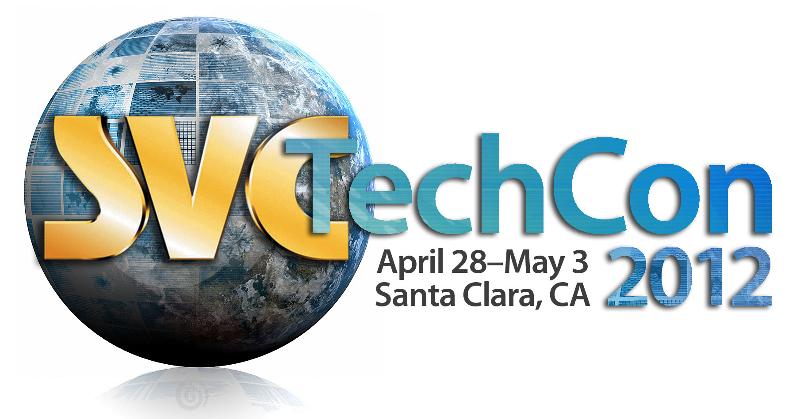
The 55th Annual SVC TechCon
April 28 - May 3, 2012
Santa Clara, California
|
| |
Next Live Webinar
Practical Aspects of Plasma Modification of Polymer Materials and Plasma Web Treatment
Instructor: Jeremy M. Grace
December 9, 2011 11 am - 2 pm EST
Course Description and Pricing
Registration is Open
Recorded Webinar Available Sputter DepositionInstructor: David Glocker Originally Presented Sept. 14. 2011Available until December 15, 2011
|
| |
|